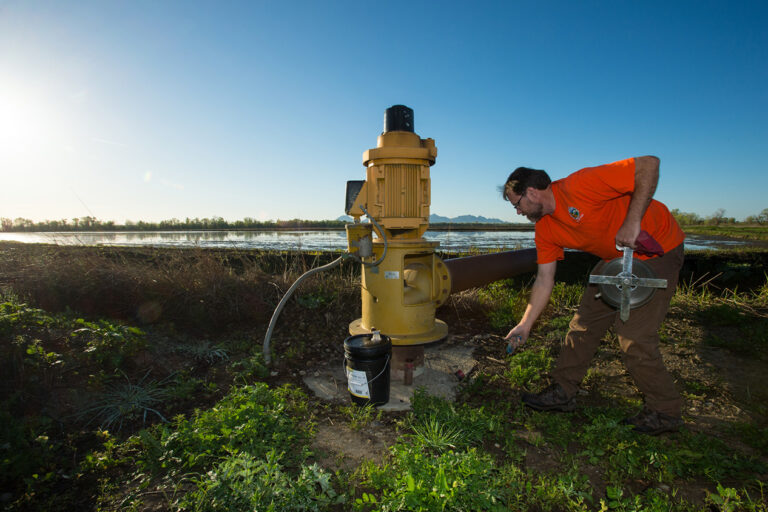Understanding California’s water balance sheet-how much there is, who has claims to it, and what is actually being “spent”[is key to effectively managing the state’s limited water supply in support of a healthy economy and environment. The latest drought has spotlighted serious gaps and fragmentation in California’s water accounting system.
California is a large, geographically diverse state, and its water systems are both physically interconnected and institutionally fragmented. Water infrastructure connects the state’s northern watersheds to its southernmost communities, Sierra Nevada rivers to coastal cities, and surface water to groundwater. Additional complexity arises from having hundreds of independently governed water systems, each with its own water accounts; from the widespread practice of managing linked surface water and groundwater as separate systems; and from a lack of clarity on how much water is reserved for environmental purposes. The combination of physical interconnectedness, institutional fragmentation, and water scarcity heightens the need for more effective accounting at the statewide and river-basin levels.
In this report, we identify gaps in California’s water information systems. We recommend that the state adopt an overarching goal of modernizing its water accounting, and that key state agencies’supported by an oversight committee of key stakeholders and independent experts-develop and adopt a common accounting framework. We outline a dozen priority actions to strengthen water accounting by: improving measurements and estimates of water availability and use; firming up legal claims on water rights and water reserved for the environment; establishing protocols, standards, and models for transparent water accounting at all levels across the state; and making water information more available and accessible to water managers, water users, policymakers, and the public.
These reforms will help California to tackle some of its most pressing water management challenges: allocating surface water efficiently and fairly in times of shortage, managing depleted and threatened groundwater reserves, stewarding the state’s fragile river and wetland ecosystems, and expanding opportunities for water trading-a key tool for reducing the costs of shortages.
Better information alone will not solve California’s water problems, but it is essential for effectively managing the state’s scarce water resources. Making a commitment to comprehensive, authoritative, and user-oriented water accounting now will help California address periodic droughts and prepare for a warmer, and possibly drier, future.
Topics
Drought Freshwater Ecosystems Water Supply Water, Land & Air

